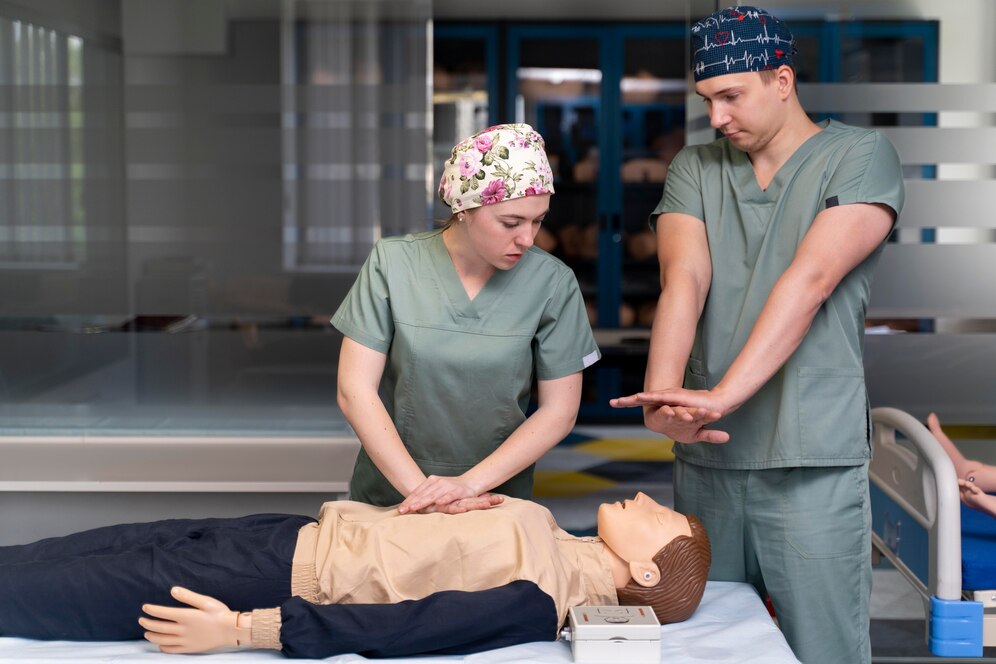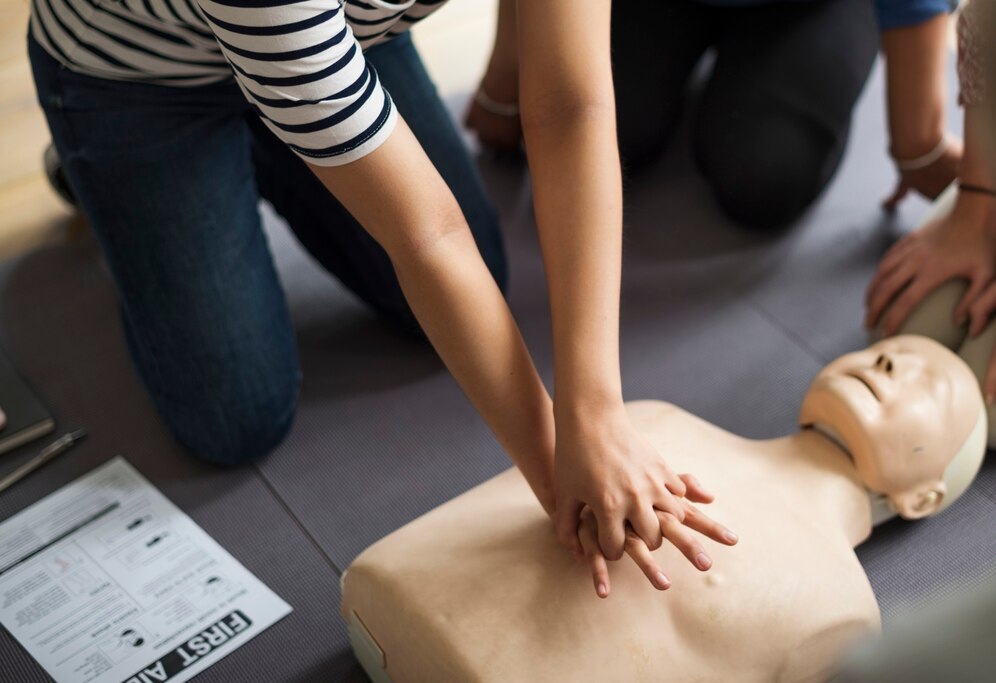By Charalampos Karouzos,
In the quiet moments of life, when everything seems to be flowing smoothly, the unexpected may take place and the gap between two consecutive heartbeats can only be bridged by an extraordinarily important skill: chest compressions. The technique of cardiopulmonary resuscitation, or CPR for short, is very well known among us for holding the power to save lives in the case of cardiac emergencies. Indeed, at the core of CPR lies a seemingly simple yet profoundly impactful technique, in which, despite its great significance, one can identify a notable gap in the learning of chest compressions.
When an individual faces a heart attack, medically termed cardiac arrest, their heart, the pump of blood in the body, experiences an abrupt stop that, without a swift intervention, can be fatal. CPR, however, can play a pivotal role in sustaining blood flow to vital organs, particularly the brain, mimicking the action of the heart, until professional medical help arrives. The rhythmic, forceful pressing on the chest helps circulate oxygen-rich blood, significantly improving the chances of survival.
In the face of a cardiac emergency, the seconds between silence and intervention can feel like an eternity, but within this narrow window, the life-preserving dance of chest compressions takes center stage. Yet, despite its potential to rewrite the script of a tragedy, CPR is in many cases not performed, as the majority of the public is not unaware of its existence but is incapable of performing it.

Chest compressions are well known primarily due to movies and series in which the technique is used to save a main character. However, films do not always represent reality, and so is the case in CPR. A major problem faced during emergency situations in real life is the presence of knowledge gaps regarding the necessary actions needed, contributing further to the hesitancy to intervene in such situations. In addition, a common misconception among the public is the fear of causing harm while performing chest compressions, specifically regarding breaking ribs or causing injury. However, studies show that the benefits of initiating CPR far outweigh the risks, and the human chest is more resilient than perceived. In other words, if you are facing a situation requiring CPR, focus solely on the quality of your compressions; breaking a rib may save a life.
Picture a moment frozen in time, heartbeat suspended, breath held, a critical scene where life hangs in the balance and the simplicity of chest compressions transforms into a symphony of hope. However, amid the urgency, there are several silent barriers preventing many from becoming the orchestrators of this life-saving cadence.
The first step in overcoming these barriers is to spread awareness about the critical role of chest compressions through initiatives aiming to educate communities about the simplicity and effectiveness of this technique. Efforts should be made to increase the accessibility of CPR training programs, making them available in community centers, schools, and workplaces, making it convenient for individuals to acquire this skill. Indeed, public campaigns, workshops and demonstrations in local neighborhoods can break down the barriers and make chest compression training more approachable.
However, no step would have such an impact as including CPR training in the school curricula, ensuring that future generations grow up with this life-saving knowledge. Learning its importance at an educational level acts as a catalyst not only for increasing awareness but also for ensuring that some individuals will be encouraged to sustain their skills throughout their lifetime by following additional programs of first aid. Even so, training must not be limited to an educational level and workplaces are to be encouraged to offer CPR training as part of employee wellness programs and promote family-oriented training sessions, fostering a culture where chest compressions become a shared skill within communities.
Chest compressions are a fundamental component of CPR, a skill that holds the potential to save countless lives. By addressing common barriers to knowledge, we can empower communities to take control of emergency situations. Only through education, accessibility, and community-driven initiatives can we bridge the gap in CPR learning, creating a society where individuals confidently and compassionately respond to cardiac emergencies. It’s time to break down the barriers and make chest compressions an integral part of our collective skill set, as the life you save could be a loved one’s or even your own.
References
- CPR. American Heart Association. Available here
- Cardiopulmonary resuscitation (CPR): First aid. Mayo Clinic. Available here
- Adult CPR Steps. American Red Cross. Available here
- How to Perform Hands-Only CPR. American Red Cross. Available here




